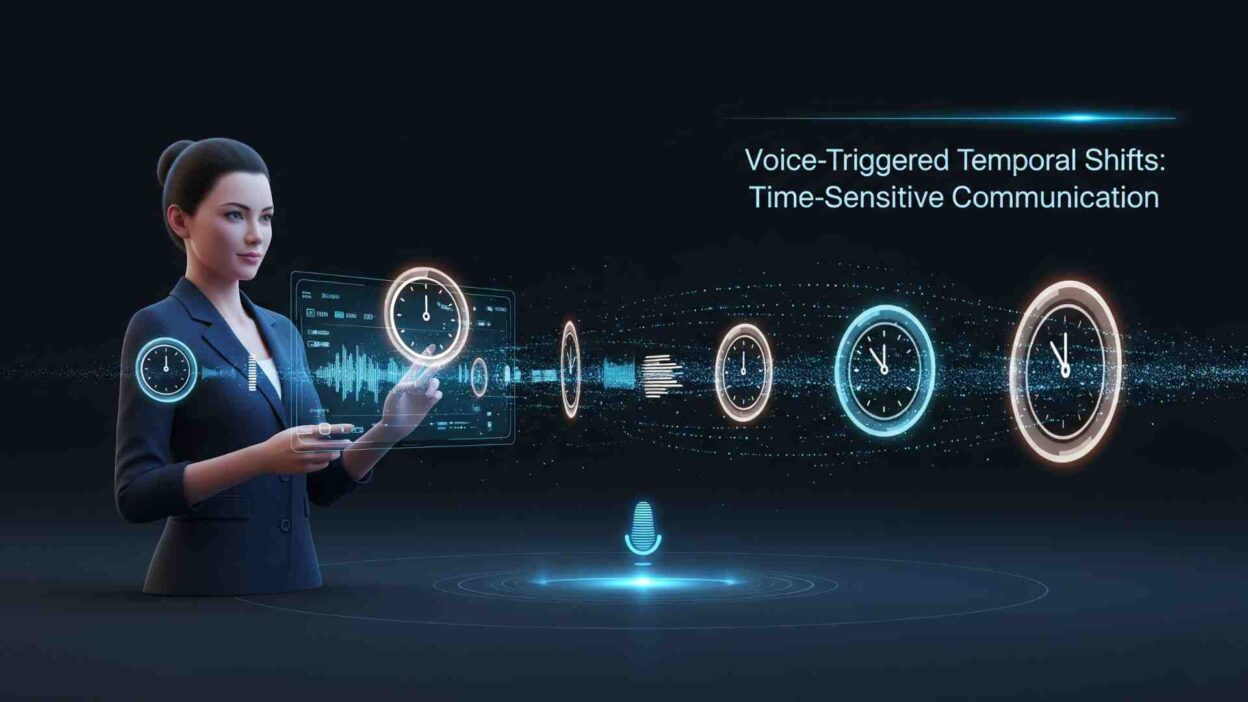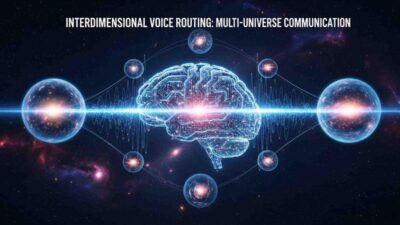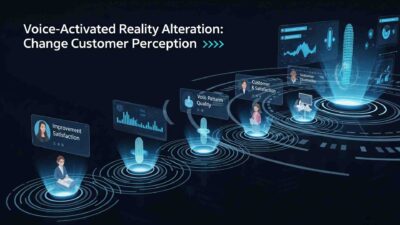Voice-triggered temporal shifts represent a revolutionary approach to time-sensitive communication systems. This innovative technology responds to voice commands by adjusting temporal parameters in real-time. Modern communication demands instant responses across different time zones. Voice activation enables seamless temporal coordination between global teams. The technology transforms how we manage time-critical conversations.
Table of Contents
Understanding Voice-Triggered Temporal Shifts Technology
Voice-triggered temporal shifts utilize advanced algorithms to process time-sensitive voice commands. The system recognizes specific vocal patterns that indicate temporal urgency. Machine learning models analyze speech cadence and tone variations. These models identify when conversations require immediate temporal adjustments. The technology creates dynamic communication environments.
Traditional communication systems operate on fixed temporal schedules. Voice-triggered temporal shifts adapt to conversational needs instantly. The system can accelerate or decelerate communication flow based on voice cues. Speakers can indicate urgency levels through vocal patterns. This creates more responsive and efficient communication experiences.
The Science Behind Temporal Voice Recognition
Temporal voice recognition analyzes speech patterns for time-related indicators. The system identifies keywords that suggest temporal urgency. Voice stress patterns reveal emotional states related to time pressure. Machine learning algorithms correlate voice characteristics with temporal needs. This creates personalized temporal response profiles.
Advanced signal processing techniques extract temporal information from voice data. The system analyzes speech rhythm and pacing variations. Vocal emphasis patterns indicate priority levels automatically. Real-time processing ensures immediate temporal adjustments. The technology maintains conversation flow while adapting to temporal requirements.
Voice Pattern Analysis for Time Management
Voice pattern analysis identifies recurring temporal communication styles. The system learns individual speaking patterns over time. Personal temporal preferences get mapped to vocal characteristics. This enables predictive temporal adjustments during conversations. Users receive customized temporal communication experiences.
Acoustic analysis reveals hidden temporal information in speech. Breathing patterns indicate urgency levels subconsciously. Voice tremor analysis detects stress-related temporal needs. The system responds to both conscious and unconscious temporal cues. This creates more intuitive communication interfaces.
Applications of Voice-Triggered Temporal Shifts
Emergency response systems benefit significantly from voice-triggered temporal shifts. First responders can prioritize communications through voice commands. The technology identifies critical situations automatically. Emergency calls receive immediate temporal priority. This saves precious seconds during life-threatening situations.
Business communications utilize temporal shifts for productivity enhancement. Voice-triggered temporal shifts help prioritize urgent meetings automatically. The system adjusts communication schedules based on vocal urgency indicators. Team coordination improves through adaptive temporal management. Project deadlines become more manageable through voice-activated prioritization.
Healthcare Communication Systems
Medical facilities deploy voice-triggered temporal shifts for patient care optimization. Healthcare providers can indicate patient priority levels through voice commands. The system adjusts communication timing based on medical urgency. Critical patient information gets transmitted immediately. This improves patient outcomes through better temporal coordination.
Telemedicine platforms integrate temporal shifts for remote consultations. Voice analysis identifies patients requiring immediate attention. The system can expedite consultation schedules automatically. Medical professionals receive temporal priority indicators during calls. This ensures critical cases receive prompt medical attention.
Financial Trading Applications
Trading floors utilize voice-triggered temporal shifts for market communications. Traders can indicate market urgency through vocal commands. The system prioritizes time-sensitive financial information automatically. Voice-triggered temporal shifts enable rapid response to market changes. This provides competitive advantages in fast-moving financial markets.
Risk management systems incorporate temporal voice analysis. The technology identifies stress patterns in trader communications. Voice-triggered temporal shifts can halt trading activities automatically. This prevents emotional decisions during volatile market conditions. Financial institutions reduce risk through temporal voice monitoring.
Technical Implementation of Voice-Triggered Temporal Shifts
Implementation requires sophisticated voice recognition hardware and software. Advanced microphones capture subtle voice variations accurately. Signal processing units analyze voice patterns in real-time. The system needs powerful computational resources for temporal analysis. Cloud-based solutions provide scalable processing capabilities.
Voice-triggered temporal shifts demand low-latency communication networks. Network delays can compromise temporal adjustment effectiveness. Edge computing brings processing closer to users. This reduces response times for temporal voice commands. Distributed systems ensure consistent temporal performance globally.
Software Architecture and Development
Modular software architecture enables flexible temporal shift implementations. Voice recognition modules analyze incoming audio streams. Temporal analysis engines process voice patterns for time-related indicators. Communication routing systems adjust message priorities automatically. The architecture supports real-time temporal adjustments seamlessly.
API integration allows third-party applications to utilize temporal shift capabilities. Developers can incorporate voice-triggered temporal shifts into existing systems. Standard protocols ensure compatibility across different platforms. This accelerates adoption of temporal shift technology. Integration complexity reduces through standardized interfaces.
Security and Privacy Considerations
Voice-triggered temporal shifts require robust security measures. Voice data contains sensitive personal information. Encryption protects temporal communication patterns from unauthorized access. Privacy policies must address voice data collection and storage. Users need control over their temporal voice profiles.
Authentication systems verify user identity through voice patterns. Temporal shift permissions prevent unauthorized access to priority channels. The system must distinguish between legitimate and fraudulent voice commands. Security monitoring detects unusual temporal access patterns. This prevents abuse of temporal communication privileges.
Benefits of Time-Sensitive Voice Communication
Productivity improvements result from adaptive temporal communication management. Voice-triggered temporal shifts reduce time wasted on non-urgent communications. Teams can focus on high-priority tasks more effectively. The technology eliminates manual communication prioritization tasks. This increases overall organizational efficiency.
Stress reduction occurs through automated temporal communication management. Users don’t need to manually prioritize every communication. Voice-triggered temporal shifts handle temporal decisions automatically. This reduces cognitive load during busy periods. Mental fatigue decreases through intelligent temporal assistance.
Enhanced Decision-Making Capabilities
Voice-triggered temporal shifts improve decision-making speed and accuracy. Time-sensitive information reaches decision-makers faster. The system ensures critical communications receive immediate attention. Decision quality improves through better temporal information flow. Organizations respond more quickly to changing conditions.
Collaborative decision-making benefits from temporal voice coordination. Team members can indicate urgency levels through voice commands. The system coordinates temporal responses across multiple participants. This ensures all team members receive time-sensitive information simultaneously. Group decisions become more efficient and effective.
Competitive Advantages in Business
Early adopters of voice-triggered temporal shifts gain significant competitive advantages. Faster response times improve customer satisfaction levels. The technology enables more agile business operations. Companies can adapt to market changes more quickly. This translates into improved business performance and profitability.
Customer service improvements result from temporal voice analysis. The system identifies frustrated customers through voice patterns. Voice-triggered temporal shifts prioritize urgent customer issues automatically. This improves customer retention and satisfaction rates. Service quality becomes more consistent and responsive.
Future Developments in Temporal Voice Technology
Artificial intelligence will enhance voice-triggered temporal shifts significantly. Machine learning models will predict temporal needs more accurately. The technology will adapt to changing communication patterns automatically. Personalization will improve through continuous learning algorithms. Voice-triggered temporal shifts will become more intuitive and effective.
Integration with Internet of Things devices will expand temporal shift capabilities. Smart buildings will adjust environmental conditions based on voice urgency indicators. Transportation systems will prioritize routes for time-sensitive communications. This creates comprehensive temporal coordination across multiple systems.
Emerging Research Areas
Brain-computer interfaces may integrate with voice-triggered temporal shifts. Direct neural signals could supplement voice-based temporal indicators. This would create more accurate temporal need detection. The technology could respond to subconscious temporal requirements. This represents the next frontier in temporal communication technology.
Quantum computing applications may revolutionize temporal voice processing. Quantum algorithms could process temporal patterns exponentially faster. This would enable more sophisticated temporal analysis capabilities. Real-time temporal optimization would become more precise. The technology would handle increasingly complex temporal scenarios.
Industry Transformation Potential
Voice-triggered temporal shifts will transform multiple industries fundamentally. Healthcare delivery will become more responsive to patient needs. Financial services will adapt to market conditions more rapidly. Education will provide more personalized temporal learning experiences. Entertainment will create more immersive temporal experiences.
Global communication will benefit from universal temporal coordination. Language barriers will diminish through temporal voice translation. Cultural temporal differences will be accommodated automatically. This will enable more effective international collaboration. World business operations will become more synchronized.
Challenges and Limitations
Technical challenges include voice recognition accuracy in noisy environments. Background noise can interfere with temporal voice analysis. The system must distinguish between intentional and accidental voice commands. Voice recognition reliability affects temporal shift effectiveness. Continuous improvement in voice processing technology addresses these challenges.
Cultural differences in voice communication styles present implementation challenges. Different cultures express urgency through varying vocal patterns. The system must adapt to diverse communication styles. Voice-triggered temporal shifts need cultural sensitivity training. This ensures effectiveness across global user populations.
Privacy and Ethical Concerns
Voice data collection raises important privacy considerations. Users must consent to temporal voice pattern analysis. Data storage and sharing policies need clear definition. The technology must protect sensitive temporal communication information. Regulatory compliance becomes crucial for widespread adoption.
Potential misuse of temporal communication privileges requires careful consideration. The system must prevent abuse of priority access. Fair temporal resource allocation needs enforcement mechanisms. Voice-triggered temporal shifts should not create communication inequality. Ethical guidelines must govern temporal communication access.
Market Outlook and Investment Opportunities
The voice-triggered temporal shifts market shows enormous growth potential. Early investment opportunities exist across the technology stack. Research and development investments are accelerating rapidly. Government funding supports temporal communication research. Commercial applications will emerge within the next few years.
Industry partnerships will drive temporal shift technology adoption. Collaboration between technology companies and end-users accelerates development. Standards organizations will create temporary communication protocols. This will ensure interoperability across different systems. Market consolidation may occur as the technology matures.
Read More: Free AI Call Apps And Voice Chat With Smart AI Agents
Conclusion

Voice-triggered temporal shifts represent a paradigm shift in time-sensitive communication. The technology promises to transform how we manage temporal aspects of human interaction. Industries from healthcare to finance will benefit significantly from adaptive temporal communication. Investment in voice-triggered temporal shifts positions organizations for future success. The technology will become essential for competitive advantage in time-sensitive industries. Early adoption will provide substantial benefits as temporal communication becomes mainstream.






[…] must have clear options to speak with humans. Voice bot accent recognition systems must recognize opt-out requests universally. A “no” in a Scottish accent should […]